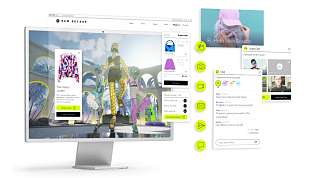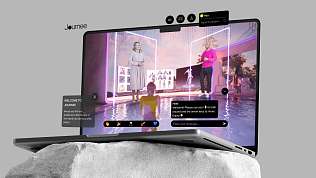Getting Started: Creating Your Immersive Web Experience

As the world moves towards Web3, virtual spaces are becoming a more popular way for consumers to shop, learn, explore and connect with each other. These offer more immersive experiences, creating greater possibilities for e-commerce, socializing, education, and everything in between.
Why Immersive Web and Why Now?
GenZ make up almost half of the global consumer population. Not only that, the tech-savvy zoomers are the first to enter the immersive web (or metaverse), having grown up with the internet and the progression of high-tech simulation engines like Unreal.
Moreover, GenZ increasingly values experiences over assets, but with a purchasing power of over $360 billion USD. Not only this, but 83% of GenZ already express interest in virtual world purchases. With 95% of global leaders believing the immersive web will positively impact their industry, it’s not hard to see why immersive virtual spaces (metaverse) are a viable alternative to traditional marketing approaches.
The versatility of virtual worlds offered by metaverse technology also means they can be easily integrated into existing business models, whether you’re looking for a shared or owned space.
So whether you’re a fashion company looking to launch an immersive fashion runway, an e-commerce platform looking to open a virtual store (iCommerce), or even an insurance broker wanting to host virtual consultations in the immersive web, immersive spaces could make a valuable addition to your business.
Through virtual worlds, you can boost your brand’s reach, generate hyper engagement and create alternative revenue models.
How Can I Get Started?
Creating an immersive virtual space (metaverse) is easier than you might think thanks to JourneeX Weblayer–enabling you to go from 3D design to an impressive immersive web experience in 30 minutes. Really, it’s the planning and strategy which is difficult. But it’s this stage which is also the most important to ensure the success of your immersive web project.
Like a website, your immersive space will need careful planning, marketing support and serious consideration before you get started.
Here are some things to consider:
The Objective: What’s the purpose of your world? A brand experience, iCommerce store, product launch, or something else?
Having a clear goal from the start will help you to plan content, plan the project and decide whether the immersive experience should be shared or owned. This will also help you to understand what integrations to implement—such as an immersive-ready CRM, or interoperable avatars.
Key Performance Indicators: After the objective is decided, list your KPIs. The creation of your virtual world should be aligned with meeting these KPIs—and exceeding them.
For example, if you’re looking to create a brand experience, your KPIs might focus on interactions, browsing time, impression and reach. On the other hand, if you’re branching out to set up your very own immersive commerce store, your KPIs will veer towards sales targets and the like.
Creation: The fun part. Now you can start to design your environmentand create the virtual world. You’ll need to communicate closely with your designer about what kind of world you want.
For example, should the world be imaginative or realistic? Science Fiction or even from a historical period? Thanks to metaverse technology and the immersive web, the possibilities are endless, so a clear vision and communication is vital at this stage.
Ultimately, you’ll need to prepare marketing content that is aligned with the nature of the virtual space, prepare brand assets (both 3D and 2D), plan a campaign, and consider your target audience.
Looking for more advice? Get in touch.
Planning Access: To plan your budget, you need to plan your delivery scenario. How will the world be accessed? By how many people?
Consider whether the virtual experience is limited, or with open access. How will it be promoted—through a private link or social media? More importantly, how long will the world be available for? These all depend on the objective of your world.
Overall, adding an immersive web experience to your business stack doesn’t have to be complicated, but careful planning and putting a strategy in place will ensure your project gets off to a good start and meets its KPIs. Need support? Visit our enablement options





















